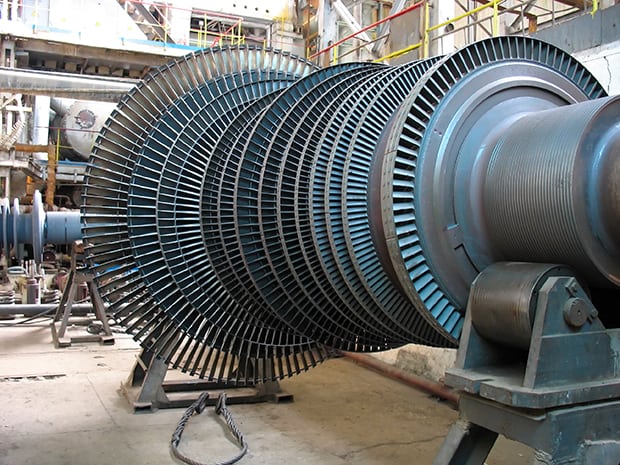Turbine systems are at the heart of power generation, converting mechanical energy into electrical power. From gas turbines to steam turbines, efficiency is key to maximizing output and reducing operational costs. One of the crucial components that helps optimize turbine efficiency is the Exciter Gate Pulse Amplifier Board. In this blog, we will explore how this board plays a vital role in improving turbine performance, stability, and overall efficiency.
What Is an Exciter Gate Pulse Amplifier Board?
Before diving into how it enhances efficiency, it’s important to understand what the Exciter Gate Pulse Amplifier Board actually is. The exciter system in a turbine ensures that the generator receives the right amount of excitation current to produce electricity. The Exciter Gate Pulse Amplifier Board is responsible for amplifying signals and controlling the flow of these currents. It regulates the excitation by controlling the gate pulses, which directly influence the turbine’s electrical output.
In simpler terms, this board acts as a controller, making sure the turbine operates within optimal electrical parameters.
How Exciter Gate Pulse Amplifier Boards Work
The primary function of the Exciter Gate Pulse Amplifier Board is to amplify signals within the turbine’s exciter system. It manages the excitation current, which affects the magnetic field in the generator. Here’s how it works:
- Signal Amplification: The board receives weak signals and amplifies them to a level where they can effectively control the excitation system.
- Gate Pulse Generation: It controls the timing and strength of the gate pulses, which determine how much excitation current flows into the generator.
- Voltage Regulation: By managing these pulses, the board helps regulate the voltage output, ensuring that the generator produces stable and consistent power.
In short, the board ensures the turbine runs smoothly, providing the necessary adjustments to electrical loads in real time.
Enhancing Turbine Efficiency Through Accurate Signal Control
Efficiency in a turbine system largely depends on how well its components are controlled. The Exciter Gate Pulse Amplifier Board plays a critical role in maintaining accurate signal control, which directly affects the efficiency of the turbine.
- Precise Voltage and Current Control: The board ensures that the voltage and current levels are optimized for maximum performance. This reduces energy losses and improves power output.
- Preventing Energy Losses: By accurately controlling the excitation current, the board minimizes wasted energy, which can otherwise occur due to inefficient electrical flow.
- Reducing Start-Up Time: The board also helps in reducing the start-up time of turbines by ensuring faster response times to changing electrical demands.
This precision not only makes the turbine more efficient but also ensures that the generator operates within its optimal performance range.
The Role of Exciter Gate Pulse Amplifier Boards in Stability and Reliability
Turbines need to operate reliably, especially in large power plants where grid stability is critical. The Exciter Gate Pulse Amplifier Board enhances both stability and reliability in several ways:
- Grid Synchronization: It helps maintain synchronization between the turbine and the electrical grid, ensuring that the turbine’s output matches the grid’s demand.
- Load Balancing: The board plays a key role in balancing the electrical load, reducing fluctuations, and preventing system overloads.
- Reducing Oscillations: It helps minimize electrical oscillations that could otherwise disrupt the smooth functioning of the turbine.
- Minimizing Downtime: By ensuring reliable excitation control, the board reduces the chances of electrical failures, which can lead to costly downtime.
Key Benefits of Efficient Exciter Gate Pulse Amplifier Boards
Investing in an efficient Exciter Gate Pulse Amplifier Board offers numerous advantages for turbine operators:
- Lower Maintenance Costs: A well-maintained and properly functioning board reduces the need for frequent repairs, keeping maintenance costs low.
- Increased Power Output: By optimizing voltage and current flow, the board can increase the overall power output of the turbine.
- Reduced Fuel Consumption: Efficient control of the turbine’s electrical systems means that less fuel is required to generate the same amount of power, lowering operational expenses.
- Extended Turbine Life: When turbines run efficiently and without excessive wear and tear, their operational life is extended, providing long-term cost savings.
Maintenance and Upkeep of Exciter Gate Pulse Amplifier Boards
Like all critical components, Exciter Gate Pulse Amplifier Boards require regular maintenance to ensure optimal performance. Key maintenance tasks include:
- Routine Inspections: Regular checks to identify any potential issues before they escalate into larger problems.
- Calibration: Ensuring the board is calibrated correctly to maintain accurate signal amplification.
- Common Issues: Troubleshooting problems such as signal degradation, voltage fluctuations, or faulty pulse generation can help avoid larger system malfunctions.
- Life Extension: Simple tasks like keeping the board free of dust and monitoring for signs of wear can significantly extend its lifespan.
Future Trends and Innovations
As technology advances, Exciter Gate Pulse Amplifier Boards are becoming more sophisticated. Future innovations may include:
- AI Integration: Artificial intelligence could be used to predict system behaviors, making real-time adjustments to the excitation current for even greater efficiency.
- Digital Control Systems: With more turbines being integrated into digital control systems, the role of Exciter Gate Pulse Amplifiers will likely expand, allowing for more precise and automated turbine operation.
Conclusion
The Exciter Gate Pulse Amplifier Board is a small yet critical component in a turbine’s electrical system. By ensuring precise control of excitation currents, it plays a significant role in improving turbine efficiency, stability, and reliability. Whether through optimized signal control, reduced energy losses, or better grid synchronization, this board is essential for modern power generation systems. Investing in its maintenance and staying ahead of technological trends can lead to long-term gains in both performance and cost efficiency.
Read More: Utility Installations
